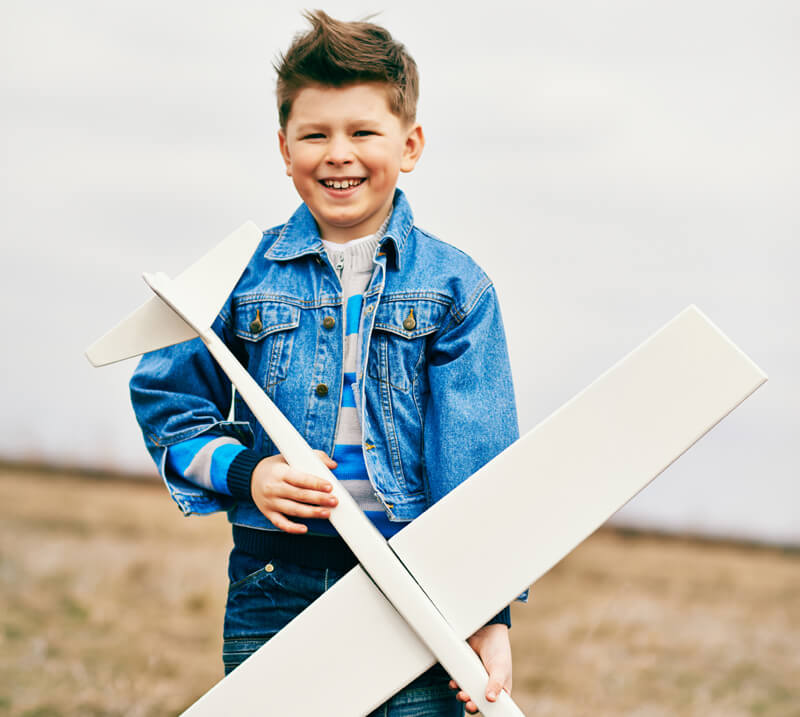Every child as some point thinks about flying. Here is a bit of history about airplane flying and some airplane activities for kids you can share that help explain about flight.

As humans observed flight in animals which have wings, such as birds, insects and bats, it was only natural that humans began to wonder if they too could fly. As a result, people began experimenting. One of the first discoveries made was in China in 400 B.C. when they discovered that a kite could fly.
Leonardo Da Vinci made several formal studies of flight in the 1480s, with over 100 drawings that illustrated his theories. Later in 1783, Joseph and Jacques Montgolfier invented the hot air balloon. It was not until between 1799 and 1850, that George Cayley discovered a way that man could fly. He designed many different versions of gliders making improvements to them for over 50 years.
In 1891, Otto Lilienthal, began to study aerodynamics and invented a glider that was able to fly a person long distances. Part of these aerodynamic studies was called the Bernoulli’s Principle. It says that increased air velocity, or air speed, causes a decrease in pressure. Using this principle, scientists were able to create a wing, or airfoil, that allows a plane to be lifted off the ground.
The wing is designed so that, while the plane is moving forward, the air moves more quickly over the top than the bottom of the wing. This creates low pressure on the top of the wing and higher pressure on the bottom. That higher pressure pushes on the wing, lifting the wing and therefore the plane also.
Samuel Langley, an astronomer was the first to realize that power was needed if a human was going to be able to fly long distances. He built a model of a plane, which he called an aerodrome that included a steam-powered engine. An engine is needed to keep the plane moving forward so that the air moves over the wings and creates lift.
The famous Orville and Wilbur Wright however, who spent many years learning about the early developments of flight used all the previous methods to finally develop a method that worked. They designed and use a wind tunnel to test the shapes of wings and the tails of the glider, found which one was perfect and then added a 12 horsepower engine to create the first aircraft that would actually make flight. This aircraft, known as “the Flyer” lifted off the ground at 10:35 am on December 17, 1903. Orville was the brother who piloted the plane, which weighed 605 pounds.
Flying Fun For Kids
Naked Eggs and Flying Potatoes: Unforgettable Experiments That Make Science Fun (Steve Spangler Science) Fisher-Price Little People Lil’ Movers Airplane(Discontinued by manufacturer)
Fisher-Price Little People Lil’ Movers Airplane(Discontinued by manufacturer) Kid Adventures: Sky Captain – Nintendo Wii
Kid Adventures: Sky Captain – Nintendo Wii
&
Air Pressure Experiment – Help your child start to learn basic physics by observing the world around them and they energy conversions that are taking place.
Paper Plane Science – Have fun experimenting with aerodynamics by playing with paper air planes.
Moving Forward – Propulsion – A plane needs more that just lift to fly, it also needs to be propelled forward. Use this fun activity to teach how an airplane move forward.




